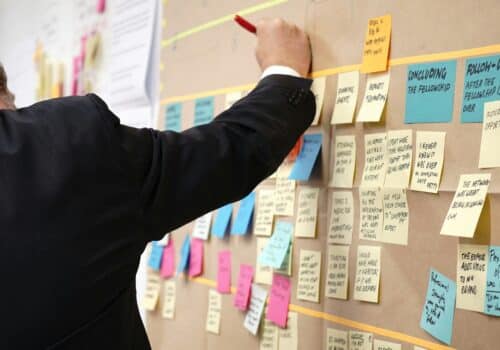ERP Readiness Series: How Strong Is Your Backbone?
In our last post, we introduced the five components of technology readiness. In this post we dive a little deeper into the first component: backbone selection and configuration.
The success of any ERP implementation relies on an organization’s people, processes, and technology being up for the task. This can take a fair amount of assessment and adjustment prior to implementation. While we believe all three are critical foundational elements, people and process have the luxury of being able to adapt on the fly to a point, whereas technology is literally the foundation upon which all other things sit. Lack of technology readiness can present unique risks and be more difficult to adjust on the fly.
For example, you begin an ERP implementation knowing you have some inefficiencies in your Order to Cash Process. Up to now, there has been a lot of manual data entry and far too many steps in that process. In advance of an ERP implementation, you’ll want to assess the process and call out improvements critical to increasing efficiency and customer satisfaction that you expect from your ERP solution. As you implement, you will test your assumptions and iterate (possibly many times) during and post-implementation until you’re satisfied that the results meet your objectives.
While you may fine tune your technology stack over time, technology readiness requires more diligence and rigor in advance than people or process readiness because the enterprise solution you’ll be implementing literally sits on top of it; relying on it in every way. Similarly, your people and processes also rely on your technology stack supporting, performing, and protecting the organization. Therefore, technology readiness is extremely important!
The first component of technology readiness is your network backbone.
The Backbone’s Connected to the . . .
“A backbone is a part of computer network that interconnects various pieces of network, providing a path for the exchange of information between different LANs or subnetworks. A backbone can tie together diverse networks in the same building, in different buildings in a campus environment, or over wide areas.” ~Wikipedia

In general, when it comes to ERP selection and implementation, determining whether you install your ERP solution on-premise or in the cloud (or a hybrid of the two) will be primarily a consideration based on your network backbone. The best way to consider backbone selection and configuration is to ask a series of questions to determine your business’s needs. The following example questions are specific to an ERP selection and implementation.
- Bandwidth: are you located in an area where you can access fast internet speeds? If so, perhaps a cloud-based ERP install would be best. Otherwise, installing on one or more on-premise servers might be needed.
- Number of sites: is your business have more than one building? Or, is it located across several different sites regionally, nationally, or internationally? How are these locations connected and at what speeds?
- Which employees and managers will be required to access the ERP system? Where are they located? What will they be doing? Entering data or running reports?
- How are employees meant to access the ERP system? Will they be in an office environment with desktop computers? Will they be in a warehouse on handheld devices? Or, will they be in remote locations on mobile devices?
- Related to access is client type. Will I install a client on each local machine or will I need to allow employees access through mobile clients and web browsers?
As you can see, assessing your technical needs involves a lot of variables. Do you have questions about your technology readiness? Call us. We have the technical expertise to help you sort out the particulars.
————
Photo by Yuriy Trubitsyn on Unsplash
ERP Readiness Self-Assessment
Is your organization ready for a new or upgraded ERP solution? Find out with this complimentary self-assessment.
Doing Business Better
You strive for excellence, believe in your people, and want to do things right the first time. And you know that you need help to get to the heart of your business challenges and make the best choices for the future of your privately held manufacturing and distribution company. That’s where we come in.
We help you focus and find exactly the right path to accelerated growth and sustainable success — from your people to your processes to your ERP software.



